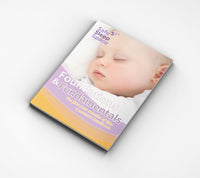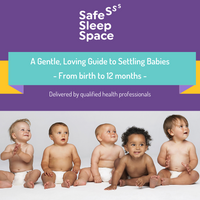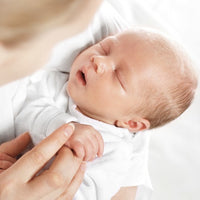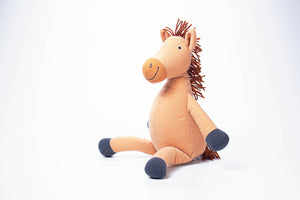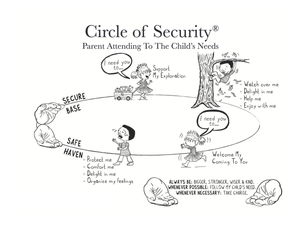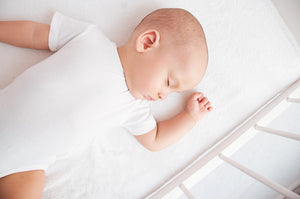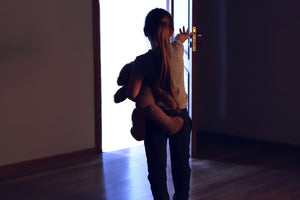Tips for when your child is sleeping away from home

We’ve all heard that babies and young children are adaptable. But the truth is that many small people are not. Just like the adults in their lives, some respond more easily to changes in their daily routine, others are less flexible.
Whichever way your child is ‘hard wired’ to respond to change, there will be times when they’ll need a little more support. Sleep and settling is one aspect of care which needs to be flexible, depending on the day and where your child may be.
Sleeping at an early childhood service
It could be a nice temptation to stay at home for the first few years after having your baby, especially when it’s time for them to sleep. But the reality is that this won’t always be possible, so you and your baby will need to develop some adaptability around their sleep.
A common time for sleep and settling change is when starting at an early childhood service. Becoming used to new caregivers, a different daily routine, other children and changes in environment can take some time. There’s also the issue of domestic cots being different in their design to those supplied in early childhood services. Similarly, toddler beds can be different to the one a child is used to at home. Early childhood educators are experienced in supporting young children to settle and sleep safely. If you’re concerned, speak with the professionals who are caring for your child.
Common reasons for changes in a child’s sleep
There are many reasons for changes in sleep. Most commonly these depend on a child’s age and stage of development.
- Transition into new developmental stages, e.g., rolling, standing, separation anxiety.
- Growth periods. When children are sleeping, they’re conserving energy and releasing growth hormones.
- The older a child becomes, the less sleep they need. Though most children still need a daytime sleep until they’re around three years of age. Keep the lines of communication open with the early childhood service your child attends.
- Household changes – moving, holidays, going away for a night or two.
- Sickness impacts on sleep needs. Children who are incubating an illness or already sick need and want more sleep than usual.
- Feeding and need for more frequent feeds, e.g., young babies need more frequent feeding than older children.
- Adjusting to a new environment. Change for small people can be exhausting. Starting at an early childhood service or when there are changes in care arrangements can cause an increase in sleep needs.
What can help my child adjust to sleeping away from home?
Managing your child’s sleep when they’re at an early childhood service
- Where possible, ask your child’s educator or early childhood teacher to follow the same pre settling routine as is done at home. Young children thrive on predictable routines and there’s benefits in them receiving the same messages each time.
- Keep the lines of communication open between yourself and your child’s educators. If your little one is struggling to adjust to sleeping away from home, do what you can to replicate the same pattern as you have at home. Just make sure it is safe.
- Let the educators or early childhood teacher know if your child has a pacifier (dummy) and/or security toy when they sleep. Take these to their early childhood service each day and make sure you bring them home when you leave for the day!
- Talk with the educators about your child’s-tired cues. Although most babies and young children give similar signs when they are tired, e.g., yawning, grizzling, losing focus, there may be some unique signals your little one gives when they are tired.
Managing your child’s sleep when you’re out and about
- Try to time outings for when your child has just woken, rather than when they’re due for a sleep.
- Take your child’s pram with you so they can sleep in there if you’re out taking care to follow Red Nose guidelines. Just be mindful that a pram is not an ideal substitute for your baby’s cot. However, they’re fine for short sleeps if you’re out and about. If you’re going to be visiting a friend or staying overnight, a porta-cot is an option.
- Be prepared to settle your baby away from where the noise and action is. You may need to excuse yourself from other people to focus on your baby’s settling, especially if they’re at the age where they’re easily distracted.
- Make a decision whether you’re going to aim to be home for your child’s sleep/s or stay out. Planning your day around your child’s needs won’t always be possible, but only you can know what works for your family. Sometimes it’s better to do a couple of short trips in a day rather than one big outing which will impact on settling times.
- As much as possible, aim to replicate the same patterns of care when you’re not at home.
- Expect your baby to fall asleep in the car and be prepared to transfer them into their cot once you’re home. Never leave your sleeping baby in their car seat unsupervised, no matter how likely they are to wake up.
Top 5 settling tips for when you’re not at home
- Be calm and confident when you’re settling your baby. Your responses will help them to feel secure and safe, no matter where you are or what you’re doing.
- Expect your baby to need a little more soothing and comforting when they’re settling. No matter how young they are, they will sense that things are different to what they’re used to.
- Follow your baby’s cues. The best time to settle your baby will be when they are showing tired signs and need to sleep. Missing this ‘sleep window’ can lead to overtiredness and difficulty with settling. N.B. It’s easy for parents who are distracted to miss their baby’s tired signs.
- Be flexible and remember what’s important. Sometimes your baby’s sleep will be less important than what you’re doing. Prioritise as you need to.
- Keep things in perspective. If, most of the time, your baby is at home and going to sleep in their cot, then this is what’s important.
Remember, no one can control whether your child goes to sleep or how long they sleep for. Focus on what is under your control and not what isn’t. Sleep is only one aspect of your baby’s care. There will be times when they don’t settle for a sleep, no matter where they are.
Be patient and kind with your baby (and yourself) when they’re learning how to settle when they’re away from their usual environment.
About the Author:
Written for Safe Sleep Space by Jane Barry. Jane has qualifications in general, paediatric, immunisation, midwifery and child health nursing. She holds a Bachelor Degree in Applied Science (Nursing) and has almost 35 years specialist experience in child health nursing. She is a member of a number of professionally affiliated organisations including AHPRA, The Australasian Medical Writer’s Association and Australian College of Children and Young People’s Nurses.
References
Baby settling survival tips | Children's Health Queensland
Car seat safety – how to make sure your restraint is safe for your baby | Red Nose Australia
https://www.pregnancybirthbaby.org.au/baby-sleep-and-settling
Settling Overtired Baby or Toddler To Sleep | Tresillian
WWWT Worksheets/Strategies: Settling your baby (whatwerewethinking.org.au)
